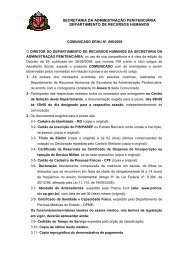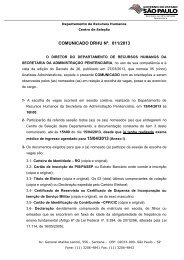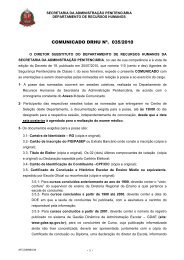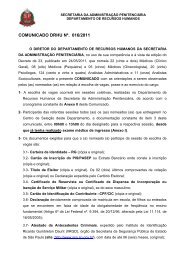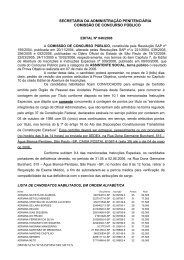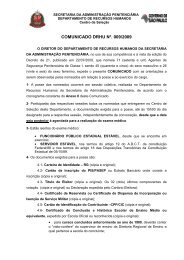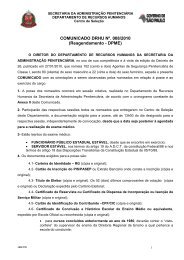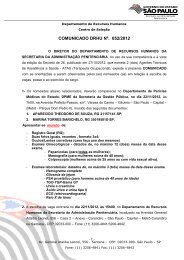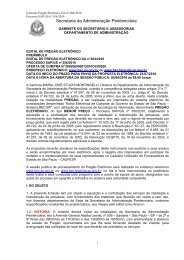exä|áà t wx VÃ|à |ÃÃÃÃz|t x V|£Ãv|tá cxÃ|à xÃv|öÃ|tá - Procrim
exä|áà t wx VÃ|à |ÃÃÃÃz|t x V|£Ãv|tá cxÃ|à xÃv|öÃ|tá - Procrim
exä|áà t wx VÃ|à |ÃÃÃÃz|t x V|£Ãv|tá cxÃ|à xÃv|öÃ|tá - Procrim
Create successful ePaper yourself
Turn your PDF publications into a flip-book with our unique Google optimized e-Paper software.
exä|áàt <strong>wx</strong> VÜ|Å|ÇÉÄÉz|t x V|£Çv|tá cxÇ|àxÇv|öÜ|táConselho Penitenciário do Estado - COPENANO 1 – nº 02Dezembro/2011As idéias e opiniões expressas nos artigos são de exclusiva responsabilidade dosautores, não refletindo, necessariamente, as opiniões do Conselho Editorial.short term marital relationships, juvenile delinquency, revocation of conditional release,criminal versatility. They can be divided in two factors (affective/interpersonal andantisocial/criminal lifestyle) and four facets (interpersonal, affective, lifestyle and antisocial).The cut-off varies a little among the different countries and cultures: in Brazil, it's 23; in theUK, 25; and in the USA and Canada, 30 points 11 .Neurodevelopmental aspects of psychopathyThe developmental aspects of psychopathy have drawn attention to the study of children andadolescents with behavioural problems, particularly related to Attention Deficit andHyperactivity Disorder (ADHD) and antisocial behaviours (conduct disorders – CD) 12, 16 . Thesubset of patients presenting callous and unemotional (CU) traits in childhood is known tohave enhanced likelihood of developing adult psychopathy. The hallmark for the CU subtypeis the lack of guilt or empathy 16 . The antisocial personality disorder, psychopathy andconduct disorder are not the same, but there is a clear relationship among them;syndromically speaking there is an overlaping of symptoms, maybe constituting a continuum(from low grade ASPD towards high grade psychopathy) or an evolutionary phase (forconduct disorder in relation to ASPD or Psychopathy). Fact is, most of the psychopaths canbe also classified as having antisocial personality disorder (ASPD), being the reversal untrue(only one third of ASPD are psychopaths) 12, 21 . There is a landmark separating the CDchildren in two different groups, with a very distinct clinical evolution: the callousunemotional(CU) and the non-callous-unemotional (non-CU) 16 . The manuals, so far, focuse



